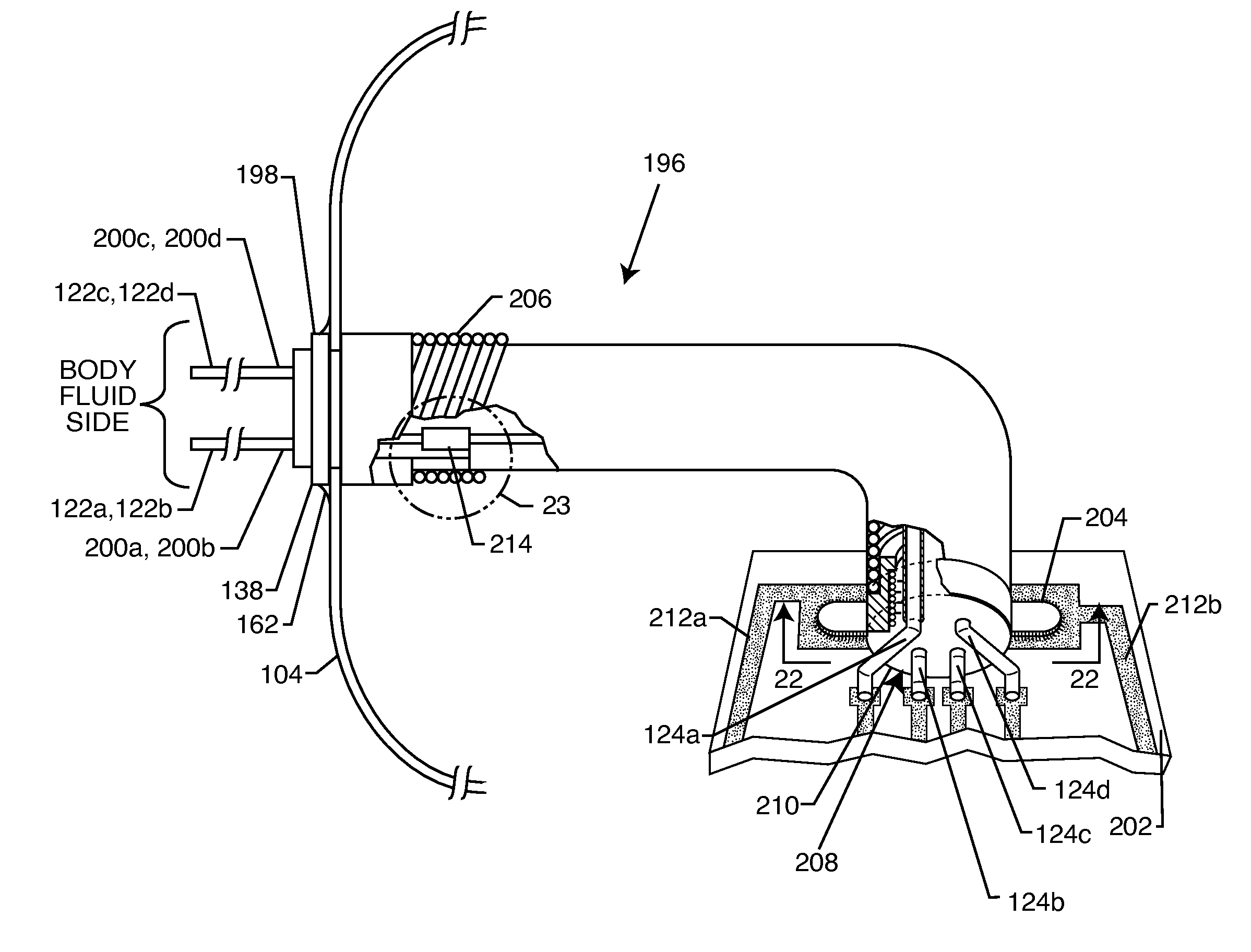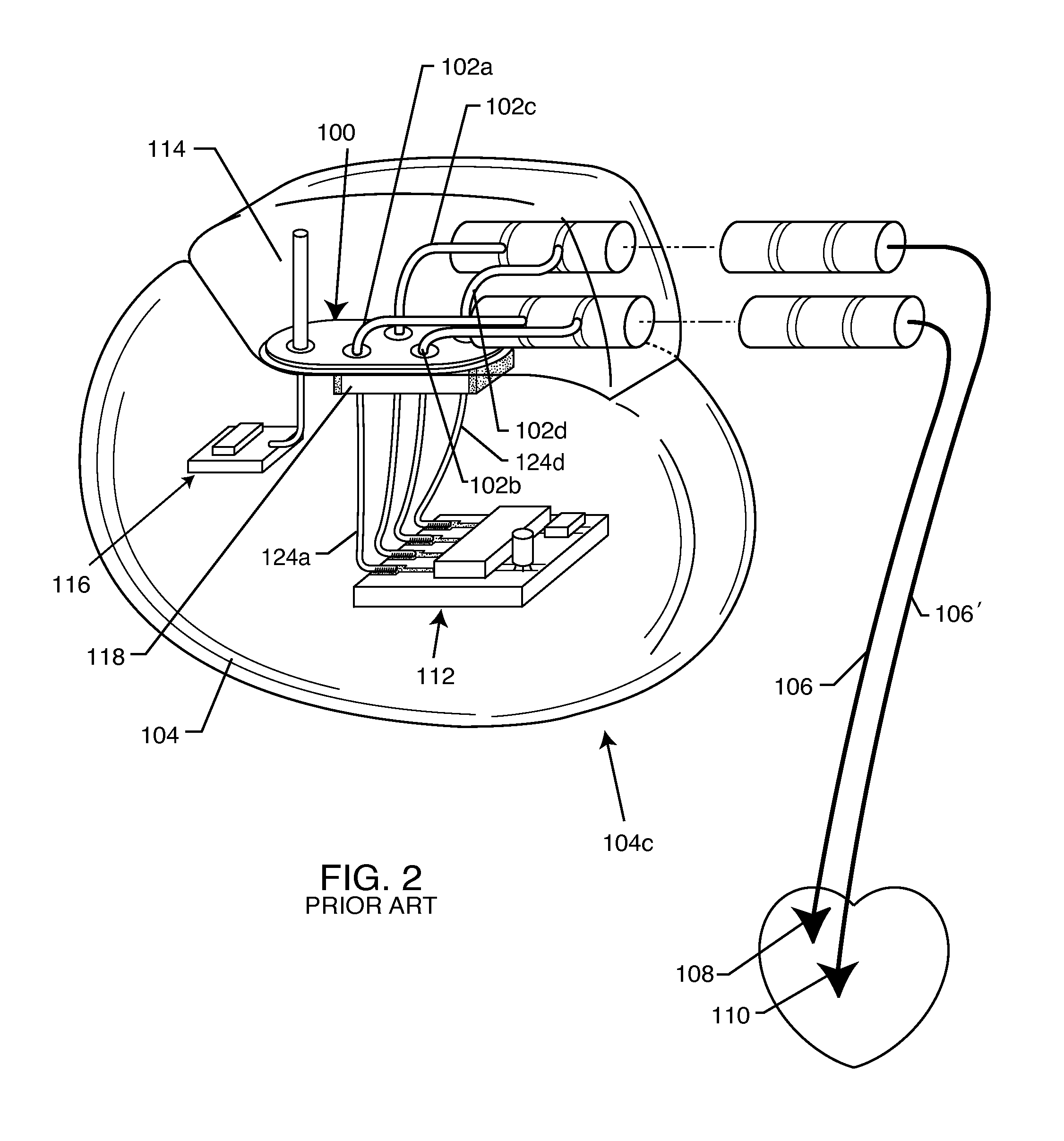Such EMI signals may interfere with the proper operation of AIMD electronic circuits.
When the
high frequency EMI energy is diverted to the AIMD electromagnetic shield housing 104, it simply circulates as eddy currents resulting in a few milliwatts of insignificant power dissipation as a small amount of heat.
This results in a miniscule and insignificant temperature rise of the AIMD electromagnetic shield housing 104.
Although, the filters did their job and acted as a
low impedance, they tended to pull stray EMI RF currents from the outside world to the point of filtering.
There are a number of problems associated with low pass EMI feedthrough filters mounted directly to the hermetic terminal 100, including increased cost, masking a
hermetic seal leaker, and reduced reliability.
Cost is increased because it is difficult to reliably
mount the filter elements (such as a multipin feedthrough
capacitor) on or immediately adjacent to the hermetic terminal subassembly.
However, when the filter is mounted directly to or against the hermetic terminal subassembly, it is subjected to significant installation stresses.
Installation of these filter elements to the
hermetic seal typically involves expensive silver-filled thermal-setting conductive flexible adhesives such as polyimides.
In addition to being expensive, these materials are difficult to dispose into the correct positions and require carefully fixturing and cleaning operations.
An additional cost comes from the fact that these life-saving devices go through high reliability screening.
This is an expensive proposition due to the fact that hermetic terminal subassembly is typically manufactured with biocompatible materials including
platinum,
platinum iridium pins, gold brazes and the like.
In other words, a significant amount of the cost of this subassembly is due to the precious metals involved in its design.
Therefore, a significant problem in the prior art relates to the mounting of feedthrough or MLCC capacitors and other types of EMI filters on or adjacent to a hermetic terminal pin / seal subassembly.
However, these channels / paths are difficult to manufacture and also add cost.
These devices tend to be more sensitive to EMI than passive pumps that have no sense circuitry or externally implanted leadwires.
Cell phones,
microwave ovens and the like have all been implicated in causing interference with active implantable medical devices.
At very high frequencies, such as above 1 GHz, this problem becomes quite serious.
Monolithic
ceramic manufacturing limitations on
electrode thickness and
conductivity means that the prior art flat-through capacitors 190 have relatively high series resistance and can only be rated to a few hundred milliamps or a few amps at best (however, an implantable defibrillator must deliver a
high voltage pulse of over 20-amps).
However, because of this cross-
coupling, there is always going to be a certain frequency at which the attenuation starts to parasitically drop off as shown.
This drop off is very undesirable in active implantable
medical device (AIMD) applications in that there would be less protection against
high frequency EMI emitters such as cellular phones and the like.
This parasitic drop off in attenuation due to cross-
coupling is even a worse problem in military and space applications where EMI filter attenuation requirements of up to 10 or even 18 GHz, is important (implantable medical applications do not generally require filtering much above 3 GHz due to the effective reflection and absorption of
human skin of RF energy at frequencies above 3 GHz).
 Login to View More
Login to View More  Login to View More
Login to View More 


